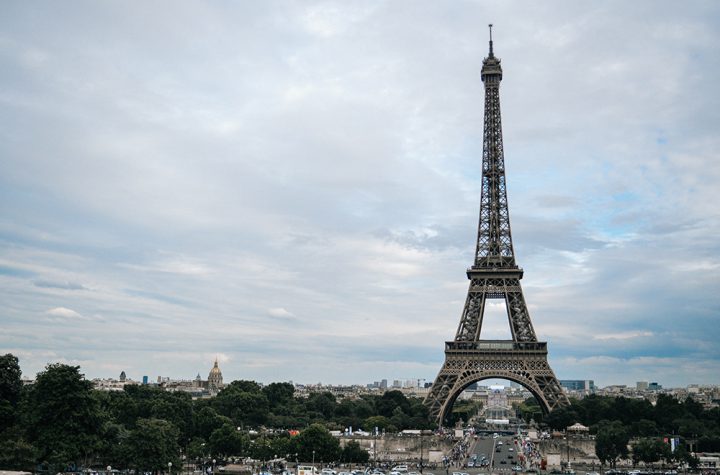
Daily deaths (7-day rolling average)
A chart made with Visual Vocabulary Components from the Financial Times visual and data journalism team.
J
F
M
A
M
J
J
A
S
O
0
100
200
China
1
2
3
Jan 23 Wuhan lockdown begins
April 8 Wuhan lockdown ends
The emergence of a new Sars-like coronavirus could not have come at a worse time for China. The country was already 10 days into Chunyun the Lunar New Year travel season that is also the largest annual human migration on the planet when government officials finally confirmed human-to-human transmission of the as-yet-unnamed virus on January 20.
The city at the centre of the outbreak, Wuhan in Hubei province, went into lockdown three days later. By then, much of the citys populace was already on the move across the country to enjoy the festivities with their families, an enormous outflow of people by road, rail and air estimated to total 5m almost half of Wuhans official population by the citys mayor.
Given the scale of human movement, further spread of the virus across China seemed inevitable. And yet, nine months after the outbreak, province-level cases data reveal Chinas remarkable success in containing it to the province of origin.
Although there are valid concerns about the reliability of Chinas official figures, its success in containing the virus is largely explained by another factor intensive contact tracing. But this, too, was subject to a curious paradox of its own: for a nation with a reputation for using cutting-edge technology to spy on its citizens, much of it was achieved with old-school methods such as questionnaires.
While China curbed the outbreak, the transmission of the virus overseas and the differing responses of other nations to its arrival meant that the real story of Covid-19 was only just beginning.
Daily deaths (7-day rolling average)
A chart made with Visual Vocabulary Components from the Financial Times visual and data journalism team.
J
F
M
A
M
J
J
A
S
O
0
3,500
7,000
China
Asia
Italy
Europe
North
America
Latin
America
Middle
East
Africa
1
Mar 13 WHO declares Europe epicentre of pandemic
By late February new cases in China were in decline, and attention had shifted to two new areas of concern, one a regional neighbour and the other further afield.
Alarms were raised in South Korea in mid-February after a single super-spreader sparked more than 1,000 cases in the city of Daegu in a matter of days. Between February 17 and 25, the countrys confirmed case count rose from 31 to 1,146 a 37-fold increase in just eight days, with cases doubling every day and a half.
Meanwhile, in Europe, all eyes were on Italy as a cluster of infections began spreading through the northern region of Lombardy.
Both trajectories looked bleak, but the countries fortunes quickly diverged.
South Korea acted quickly, taking advantage of legislation passed in response to the 2012 Mers crisis that allows for extensive surveillance of its citizens during an infectious disease outbreak. A comprehensive contact-tracing operation was put in place, partnered with a rapid expansion of testing. On March 20, South Korea was carrying out 100 tests for every positive one that came back, the same day it recorded its 100th death. It took Italy three more months and 34,000 deaths to reach the same testing levels.
Italy was slow to act at the outset, and Lombardys outbreak had already become an epidemic by the time the region was placed into lockdown on March 8. Once March and April had passed, 26,000 more people had lost their lives in the region than would typically die in the same months more than half of Italys total toll of excess deaths.
Daily deaths (7-day rolling average)
A chart made with Visual Vocabulary Components from the Financial Times visual and data journalism team.
J
F
M
A
M
J
J
A
S
O
0
3,500
7,000
Asia
Italy
UK
Europe
North
America
Latin
America
Middle
East
Africa
1
Mar 23 UK enters lockdown
In the weeks that followed the crisis in Lombardy, counting ever-increasing Covid-19 fatalities became a daily task across much of Europe along with speculation about what the pandemics final death toll would be.
Patrick Vallance, the UKs chief scientific adviser, told the health select committee on March 17 that keeping UK deaths to 20,000 or below would be a good outcome.
That figure proved to be overly optimistic but its hard to say by precisely how much: establishing the number of Covid-19 victims has been a problem both in the UK and in other countries around the world.
By whatever measure the pandemics grimmest accounting is computed, the UKs death toll and particularly Englands remains among the highest in the world. By its headline figure, 38,524 people in England have died within 28 days of a positive Covid-19 test, but this rises to 42,672 if you extend the cutoff to 60 days, according to the UKs coronavirus dashboard.
The Office for National Statistics, meanwhile, has tallied 50,642 death certificates mentioning Covid-19 up to October 2, and, if you begin counting on March 6, the day that the 100th positive case was recorded, 56,537 deaths in excess of the average for the same period in the past five years. This figure includes deaths from all causes, including Covid-19.
The UKs experience demonstrates how seemingly precise tallies of the viruss victims can vary considerably using alternative definitions and administrative processes. This also explains why national headline death tolls are almost certainly undercounts of the pandemics true, but only imprecisely knowable, human cost.
Daily deaths (7-day rolling average)
A chart made with Visual Vocabulary Components from the Financial Times visual and data journalism team.
J
F
M
A
M
J
J
A
S
O
0
3,500
7,000
Asia
Italy
UK
Europe
US
Latin
America
Middle
East
Africa
1
Mar 10 Just stay calm, it will go away – Donald Trump
Across the world, public health data are gathered at a very local level before aggregation into regional and national figures. International organisations then collate these to provide the country-level global overview of the pandemic shown in the main chart in this story. While useful as a summary, local distinctions get lost, painting a misleading image of whole countries being affected uniformly.
Nowhere is this more apparent than in the country that has lost more of its residents to Covid-19 than any other. With less than one-twentieth of the worlds population, the US accounts for one in five deaths officially attributed to Covid-19. But almost nowhere in the US looks like the US as a whole.
The US entered the crisis already particularly vulnerable among western nations due to many residents being without health insurance and a lack of paid sick leave in many areas. Moreover, in Donald Trump, it had a president who consistently downplayed the severity of the disease that he would eventually contract.
In the absence of a co-ordinated federal response, state and local governments introduced their own measures to contain the virus. Loosening of restrictions has been similarly fragmented, and in some cases started before evidence suggested local outbreaks were under control.
The complex patchwork of often contradictory state-level measures can be visualised using an index developed by political scientists at Oxford universitys Blavatnik School of Government to summarise the overall stringency of responses to the pandemic.
When the virus claimed thousands of victims in the spring, the centre of the crisis was New York City, its suburbs and similar cities in the north-east; vast swaths of the country were largely unaffected. As the year wore on, startlingly different geographical patterns emerged. Once confined to the most densely populated cities, the virus seeped out into small-town and rural America, with places such as Hancock county, Georgia, (population: 8,457) registering among the highest death rates in the country. By early October, the overall death rate was highest in counties classified as the small towns and rural areas and lowest in large urban counties.
How coronavirus swept across the US
Your browser does not support the video tag.
Daily deaths (7-day rolling average)
A chart made with Visual Vocabulary Components from the Financial Times visual and data journalism team.
J
F
M
A
M
J
J
A
S
O
0
3,500
7,000
India
Italy
UK
Europe
US
Brazil
Mexico
Peru
Ecuador
1
2
May 26 WHO declares the Americas the new epicentre of the pandemic
Early Sept Nearly 300,000 deaths in Latin America since March
Following the playbook of the US president, the leaders of Brazil and Mexico, the two most populous countries in Latin America, also downplayed the risks of the pandemic and delayed preventative action.
They too were rebuked by state governors who stepped in to introduce strict containment rules locally, in defiance of their countries leaders dismissive attitudes to the disease. But the lack of co-ordinated response and messaging left people confused about the rules and let the virus spread with disastrous consequences. By May 26 the World Health Organization had declared Central and South America as the new centre of the virus, with Brazils daily death rate the highest in the world.
However, European-style lockdowns turned out not to be effective or worth the economic pain to some of the poorer emerging economies on the continent: despite early lockdowns in countries such as Ecuador and Peru, the Andean nations plunged into crisis. Enforcement of proper social distancing proved difficult, as many people are employed in the informal economy, without a safety net that would allow them to apply for Covid-related government handouts. They often depend on daily wages for their evening meal.
Under-funded infrastructure was stretched beyond its limits, with local authorities, hospitals and funeral homes overwhelmed by the scale of the challenge. By October 5, countries of Central and Latin America accounted for 35 per cent of deaths worldwide, their share ever increasing.
Meanwhile, in India, high levels of urbanisation, coupled with inadequate housing and sanitation, as well as a large informal labour force, formed perfect conditions for the virus to wreak havoc, especially in the countrys mega-cities and slums.
The early national lockdown imposed by the Prime Minister Narendra Modi in March was one of the strictest in the world but it failed to flatten the curve of cases and left millions of people without their daily wages. Suddenly jobless, many people travelled to their home villages to reunite with their families, often taking the virus with them.
Forced to reopen the economy to let people earn again, the central government loosened restrictions in early May, which led to a sharp rise in cases and a splintering of opinions among state leaders on how fast to manage the economic reopening. Some decided to extend the lockdown locally but, inevitably, the uneven easing of restrictions led to a surge in the number of cases. They are now growing faster than anywhere else in the world by 80,000 a day and both the economic and human toll remain huge.
Daily deaths (7-day rolling average)
A chart made with Visual Vocabulary Components from the Financial Times visual and data journalism team.
J
F
M
A
M
J
J
A
S
O
0
2,000
4,000
Asia
Spain
Europe
US
Latin
America
Middle
East
Africa
1
Sept Deaths rise in Europe
As spring became summer, infection rates fell across Europe, and governments began easing restrictions in the hope that normal life could resume with the virus in remission. But early optimism gave way to alarm because, in one country after another, increased socialising was followed by an uptick in cases. Autumns second wave has been much more muted than the towering peaks of the spring, but the uptick in cases is nonetheless feeding through into hospital admissions and deaths.
One of the hopes in some quarters had been that herd immunity could provide some protection, with places hard-hit in the spring sheltered from the worst of any resurgence in the virus due to increased antibody levels. Unfortunately, that has proved not to be the case so far, with many of the centres of the outbreak in the spring also suffering the worst in the autumn, both at the country and subnational region level.
Spain, France and the UK were all among the worst-affected countries in Europe in April, and in September things looked no different. Similarly, Paris and Madrid have been badly hit both in the spring and autumn.
Yet for all the patterns that appear in the data, the resurgence also demonstrates the outsized role seemingly played by random chance in the story of Covid-19. When Italy avoided a second wave in the late summer, many pointed to its high levels of mask-wearing as a contributory factor. And indeed, only one country has higher levels of mask-wearing than Italy. That countrys identity? Spain, home to the worst second wave of the continent.
But there is room for hope as the world attempts to stave off a bitter Covid-19 winter. Mortality rates from the virus have fallen over the course of the year as healthcare expertise and technology have improved. In March, somebody aged 70 or above had a 50:50 chance of survival if admitted to hospital with the virus. By August their chances had climbed to 74 per cent.





More Stories
The South Australian government has promised to deliver the “biggest hit of economic adrenalin in South Australian history” in Tuesday’s budget.
Boris Johnson will proceed with his controversial Brexit bill despite US president-elect Joe Biden having previously warned the UK over the draft legislation.
Singapore-based Nektar.ai, a productivity platform for sales teams, has raised $2.15 million in seed funding. Founded earlier this year, Nektar has been working in stealth mode with five companies, and has plans for an early adopter release before a public la…